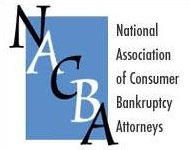
Every extra dollar deduction you can wring out on bankruptcy’s means test is important. A dollar doesn’t sound like a lot, but an extra dollar less in DMI saves a Chapter 13 debtor $60 over the life of a 60 month plan. Every $100 saves $6000. You get the picture.
Besides lowering the cost of the case to the debtor, a lower bottom line brings the DMI calculation into better alignment with reality, making plan completion that much more likely.
Exploit the obvious
But first, the most underutilized means test deduction is projected health care. Almost without exception, debtors have stinted on health care in favor of debt service. And the cost of health care is increasing well ahead of overall inflation. Looking forward, that should change. And, they underestimate the of pocket cost of that care.
Make sure that the debtor’s projections include out-of-pocket payments for routine medical and dental needs, but also for needed care or medication that has been postponed because of finances.
For the uninsured, remember that the means test allows a deduction for health insurance that the debtor needs but doesn’t have. [ Thank you, Senator Ted Kennedy].
Now, let’s roll up our sleeves and look for less obvious means test deductions.
Obligations created by security agreements
Every mortgage or deed of trust imposes obligations on the borrower beyond making the monthly payment. Borrowers are required to
- Acquire insurance
- Pay property taxes
- Maintain the property
For example, the deed of trust may say something like
“To Protect the Security of This Deed of Trust, Trustor Agrees: (1) To keep said property in good condition and repair;…to cultivate, irrigate, fertilize, fumigate, prune and do all other acts which from the character or use of said property may be reasonably necessary, the specific enumerations herein not excluding the general.
Query whether the security agreement on a car loan contains a like obligation to maintain and repair.
The means test provision for non-rent/mortgage costs appears at Line 8 on the B122A-2 as an expense subject to local standards. The housing and utilities allowance lumps together
- insurance,
- maintenance,
- repairs,
- gas, electric, water, heating oil,
- garbage collection,
- telephone, cell phone,
- internet, and cable.
Unhelpfully, we have no insight as to how the powers-that-be break down these expenses within the allowance.
Taking insurance first, huge insurance rate increases are being seen everywhere. Appropriate insurance is a requirement of the mortgage loan. So, notwithstanding the inclusion of “insurance” as a non-mortgage expense, I treat property insurance as akin to the monthly mortgage payment on either line 33 or 34.
For a homeowner who, unlike a renter, is solely responsible for maintenance and repair of a property, that current allowance is screamingly inadequate to cover needed expenses in this category. Just ask anyone who needs a new roof or a plumbing repair.
The rule of thumb for mainentance and repair in the industry is 1-4% of the property’s value. Yet, too often we see a repair expense of $100-200 a month. As an obligation created in the loan agreements, include a reasonable number as a mortgage-adjacent deduction.
Inflation
Almost as certain as death and taxes is inflation. If we are looking at future expenses over 5 years, today’s cost of necessities won’t be the cost in 60 months.
A quick analysis of a $350/month expense at filing shows, at 2% inflation, that expense will average $364 over the life of the plan. At 3% inflation, today’s $350 expense averages $372 per month. You can calculate the savings to the debtor of projecting the real anticipated cost of the expense in question.
Work-from-home expenses
As more and more people work exclusively or in part from home, they incur expenses to outfit and operate a home office. Those expenses may include infrastructure like suitable office furniture, computer and printer, and lighting as well as high speed internet.
If those expenses are reimbursable by the employer, I treat the reimbursement as income and include a offsetting special circumstances entry for those expenses equal to the reimbursement. If not reimbursed, the expenses appear as a business expense on Line 43.
Children with needs, special or not
The means test gives us several opportunties to capture and deduct the not-insubstantial costs of raising children. Childcare appears on Line 21. Per the form, this includes day care, babysitting, nursery and preschool expenses. Consider whether afterschool activities are a form of child care.
Children with special needs, physical or intellectual, may need professional care, tutoring, individual transportation, or private school. Don’t shy away from asking clients whether any of these issues add to their expenses.
Line 29 provides a deduction for education expenses to attend public or private school, per child. Think books, field trips, transportation, uniforms, sports.
Some advocacy required
To the extent these ideas depart from the routine way that the means test is approached, utilizing them may require advocacy supported by supporting documents and declarations. But each, I believe, is consistent with the idea that only the disposable portion of the debtor’s income is available to pay creditors.
More
The real cost of homeownership
Skipping the means test altogether






